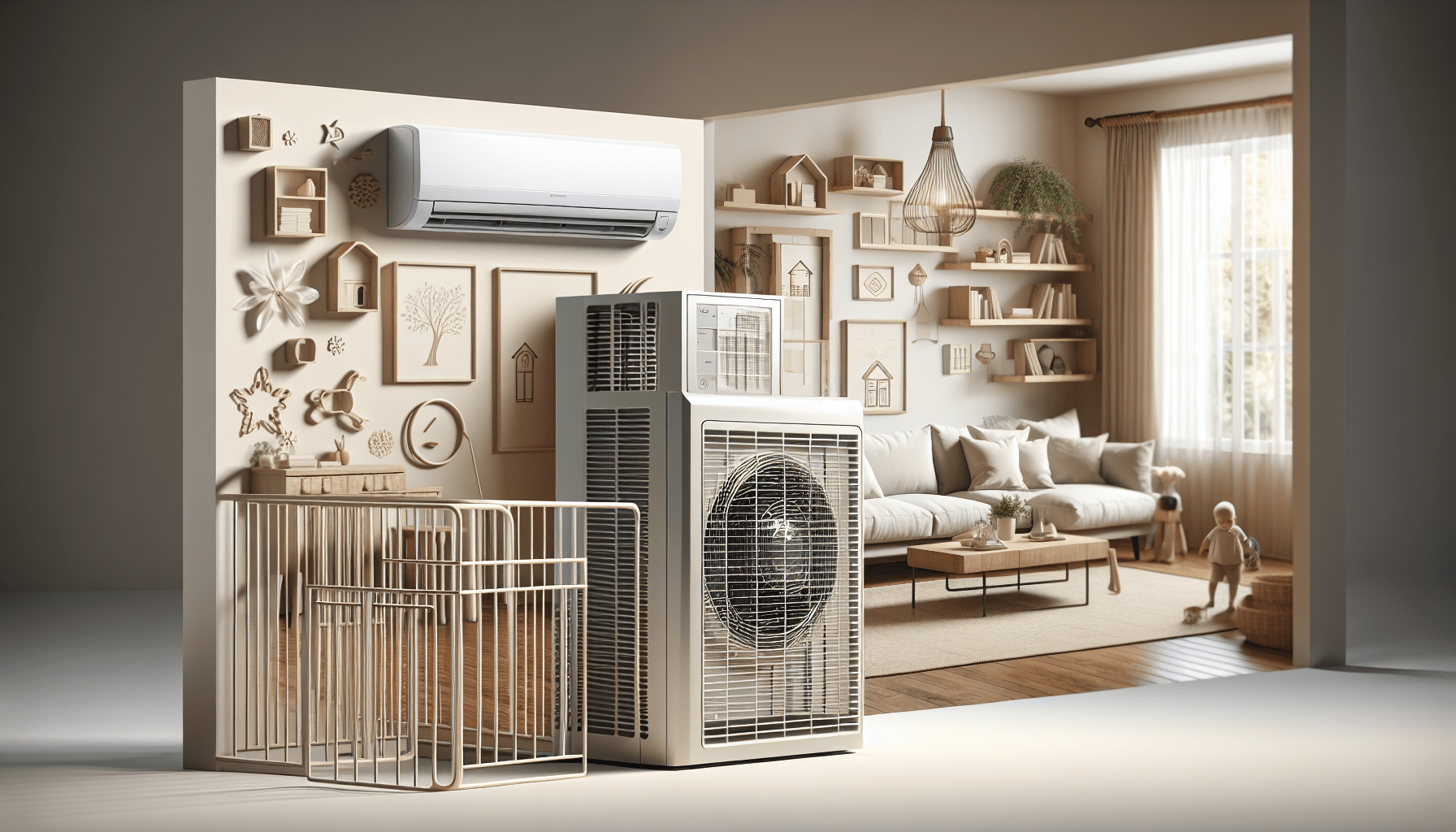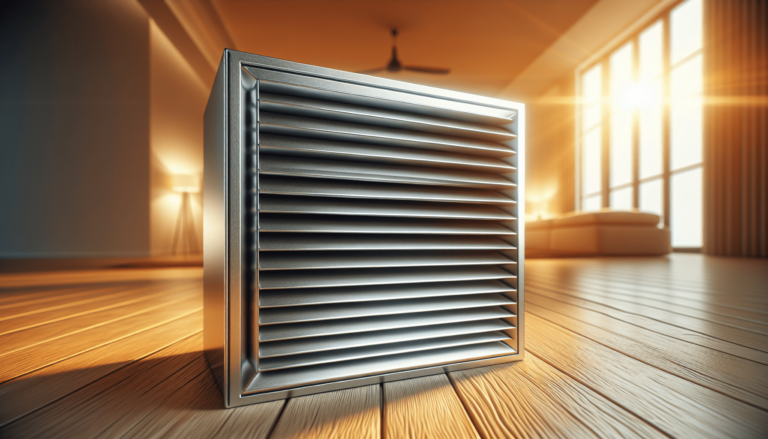

HVAC Services
Get Professional Repairs From The Area's Trusted HVAC Technicians. Ask About Our Services! We Offer Professional Heating & Cooling System Repairs And Guarantee Long-Lasting Results.
Got Question? Call us: (850) 678-2665Financing
Childproofing HVAC Components In Residential Settings
How to childproof HVAC components in your home: Essential steps to prevent accidents and ensure safety. Learn practical tips and solutions for keeping your kids safe!

Have you ever wondered if your home’s HVAC system poses a risk to your kids? While most of us think about baby gates, cabinet locks, and secure windows when childproofing, the HVAC system often gets overlooked. Yet, this vital home component can pose serious dangers to your little ones if not properly secured.
Understanding The Risks
Let’s first shed some light on why your HVAC system can be a hazard. While it works tirelessly to keep your home cozy in winter and cool in summer, it comprises several elements that can be dangerous for children. Components like vents, thermostats, and outdoor units can all pose potential risks. Addressing these concerns early on can help prevent accidents and create a safer environment for your young ones.

Common HVAC Components and Associated Risks
Before diving into how to childproof your HVAC system, it’s essential to understand the different components and their associated risks. This way, you can address each element with precision and ensure that you haven’t missed anything critical.
Vents and Ducts
Vents and ducts seem pretty harmless, right? They either blend into the floor or ceiling, silently and efficiently circulating air. However, for kids, these can be intriguing features that are ripe for exploration. They might drop toys into the vents or try to reach inside, posing a risk of injury or, worse, blocking the airflow, which can affect the efficiency of your system.
Thermostats
Thermostats control the temperature settings of your home, and children are naturally curious about buttons and screens. How many times have you found your toddler fiddling with any display they can find? Mismanaged thermostat settings can lead to an uncomfortable home environment, fluctuating temperatures, and even increased utility bills.
Outdoor Units
Outdoor HVAC units are one of the most hazardous components. These units are typically located outside and can become a source of fascination for children. The spinning fan blades inside can cause serious injury if a child tries to poke their fingers through the vents. Outdoor units also have electrical components that pose risks such as electrical shocks or even fires if tampered with.
Indoor Units
Indoor units are often tucked away in utility rooms or basements, but they aren’t any less hazardous. These units usually involve electrical components and moving parts. Furthermore, they can generate heat, making them a potential burn hazard. The pipes leading to and from these units can also be tempting climbing challenges for young kids.
How to Childproof Your HVAC System
Once you’ve grasped the risks, the next logical step is to childproof each component effectively. Below are practical steps you can take to ensure that every part of your HVAC system is child-friendly.
Securing Vents and Ducts
Securing vents and ducts is relatively straightforward but very necessary. Begin by installing vent covers that screw into place, making it difficult for little hands to remove them. Additionally, choose covers with smaller grates to prevent children from dropping toys or other objects inside.
| Task | Description | Tools Needed |
|---|---|---|
| Install Vent Covers | Screw down vent covers to avoid easy removal by kids. | Screwdriver, Vent Cover |
| Choose Small Grate Covers | Opt for covers with smaller openings to prevent toy insertion. | Vent Cover |
Childproofing Thermostats
Making your thermostat childproof can save you from unexpected spikes in your cooling and heating costs. The simplest method to protect the thermostat is to install a cover or guard. These are available in most hardware stores and are designed to prevent unauthorized access while still allowing you to easily adjust settings.
| Task | Description | Tools Needed |
|---|---|---|
| Install a Thermostat Cover | Purchase and install a cover to limit access to the thermostat. | Screwdriver, Cover Kit |
Ensuring Outdoor Unit Safety
For outdoor units, fencing or enclosures can be an excellent safeguard. These structures should be high enough to prevent children from climbing over and situated far enough away from the unit to prevent access through the bars. Ensure they have a locked gate to deter determined youngsters. Additionally, routinely inspect the outdoor unit to ensure it’s in good condition and free from external tampering.
| Task | Description | Tools Needed |
|---|---|---|
| Install Fencing or Enclosures | Build or buy a barrier around the outdoor unit. | Fencing, Locks |
| Regular Inspection | Regularly check the unit for signs of tampering. | None |
Making Indoor Units Safe
Securing indoor units often requires more comprehensive measures. First, ensure that the unit is in a location that’s not easily accessible to children. Installing a door lock for the utility room can be highly effective. If the unit can’t be moved and remains accessible, consider installing guards over any exposed pipes and wires to prevent tampering.
| Task | Description | Tools Needed |
|---|---|---|
| Install Door Locks | Add locks to utility room doors to keep children out. | Door Lock, Screwdriver |
| Cover Pipes | Use pipe covers to block access to any exposed components. | Pipe Covers |
Temperature Control Safety
Temperature control is another vital aspect that can contribute to child safety. If your HVAC system includes a programmable thermostat, you can set limits on temperature adjustments. This ensures the system won’t go beyond safe temperature ranges regardless of unauthorized activity.
| Task | Description | Tools Needed |
|---|---|---|
| Program Thermostat | Set temperature limits to avoid extreme settings. | User Manual |
Choosing the Right Products for Childproofing
While DIY solutions can go a long way, sometimes investing in specialized childproofing products can offer peace of mind. Here are some recommended products that can make the process easier.
Vent Covers
Modern vent covers come with childproof screws, making them harder to remove. Brands like Safety 1st and CoverMates offer excellent options that blend seamlessly with home decor.
Thermostat Guards
Thermostat guards are acrylic or plastic boxes that mount over your thermostat to prevent tampering. Options from Honeywell and AmazonBasics provide reliable and affordable choices.
Outdoor Unit Enclosures
Outdoor units can be safeguarded with enclosures from manufacturers like Enclo Privacy Screens and Suncast. These are aesthetically pleasing and functional, made to withstand outdoor conditions.
Pipe Covers
Foam pipe covers from brands like Frost King are an economical and effective way to keep pipes secure and insulated. These covers are easy to install and provide extra safety for inquisitive kids.
Maintenance and Regular Checks
Childproofing your HVAC system isn’t a set-it-and-forget-it task. Regular maintenance and checks are imperative to ensure that childproofing measures remain effective.
Monthly Inspections
Perform monthly inspections to ensure all protective measures are still in place. Check vent covers and door locks for any signs of tampering and make sure that outdoor unit enclosures remain intact and locked.
Professional Maintenance
Annual or bi-annual maintenance checks by professionals can help identify any potential safety issues that you might have missed. Companies like Tempacure Heating and Air Conditioning offer such services and can provide expert advice on additional childproofing steps.

Educating Your Children
While physical barriers are essential, educating your children about the risks associated with the HVAC system is equally important. Teach them what parts of the system are off-limits and explain the potential dangers in an age-appropriate manner. Encouraging safe behavior complements the physical measures you’ve put in place and reinforces a culture of safety in your home.
Real-Life Stories and Cautionary Tales
You might wonder if these measures are really necessary or just another parental paranoia. Real-life incidents, however, demonstrate the importance of childproofing HVAC systems.
The Curious Toddler and the Thermostat
Take, for example, the Johnson family from Niceville, FL. Mrs. Johnson noticed unusual temperature fluctuations in their home. It turned out their three-year-old had been playing with the thermostat. While this incident didn’t result in injury, it led to higher utility bills and an uncomfortable home environment.
The Outdoor Unit Mishap
Then there’s the case of the Franks family. Their two-year-old managed to poke a finger through the outdoor unit’s vent. Luckily, the injury was minor, but it was an eye-opening experience that led them to install a secure enclosure around the unit.
Final Thoughts
Childproofing your HVAC system might seem like a daunting task at first, but it’s a crucial step in ensuring the overall safety and comfort of your home. By understanding the potential hazards, using the right products, and staying vigilant with regular maintenance and checks, you can effectively create a safe environment for your children.
If you need help with professional childproofing or regular HVAC maintenance, consider contacting Tempacure Heating and Air Conditioning. Located in Niceville, FL, they offer comprehensive services that can address any concerns you may have. Give them a call at (850) 678-2665 or visit their website at tempacurehvac.com for more information.
So, is your HVAC system childproofed? If not, it’s definitely time to start ensuring every component is safe for your little ones.







